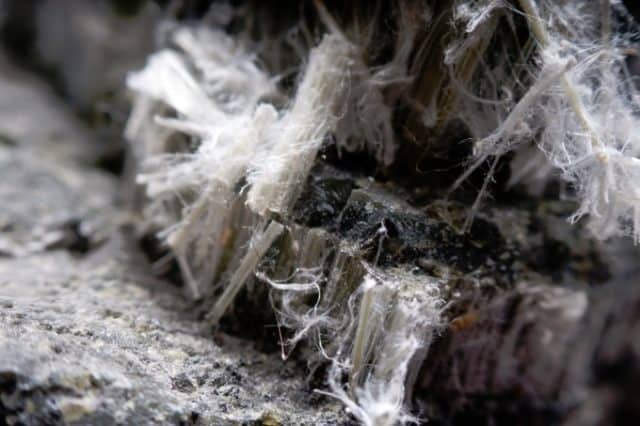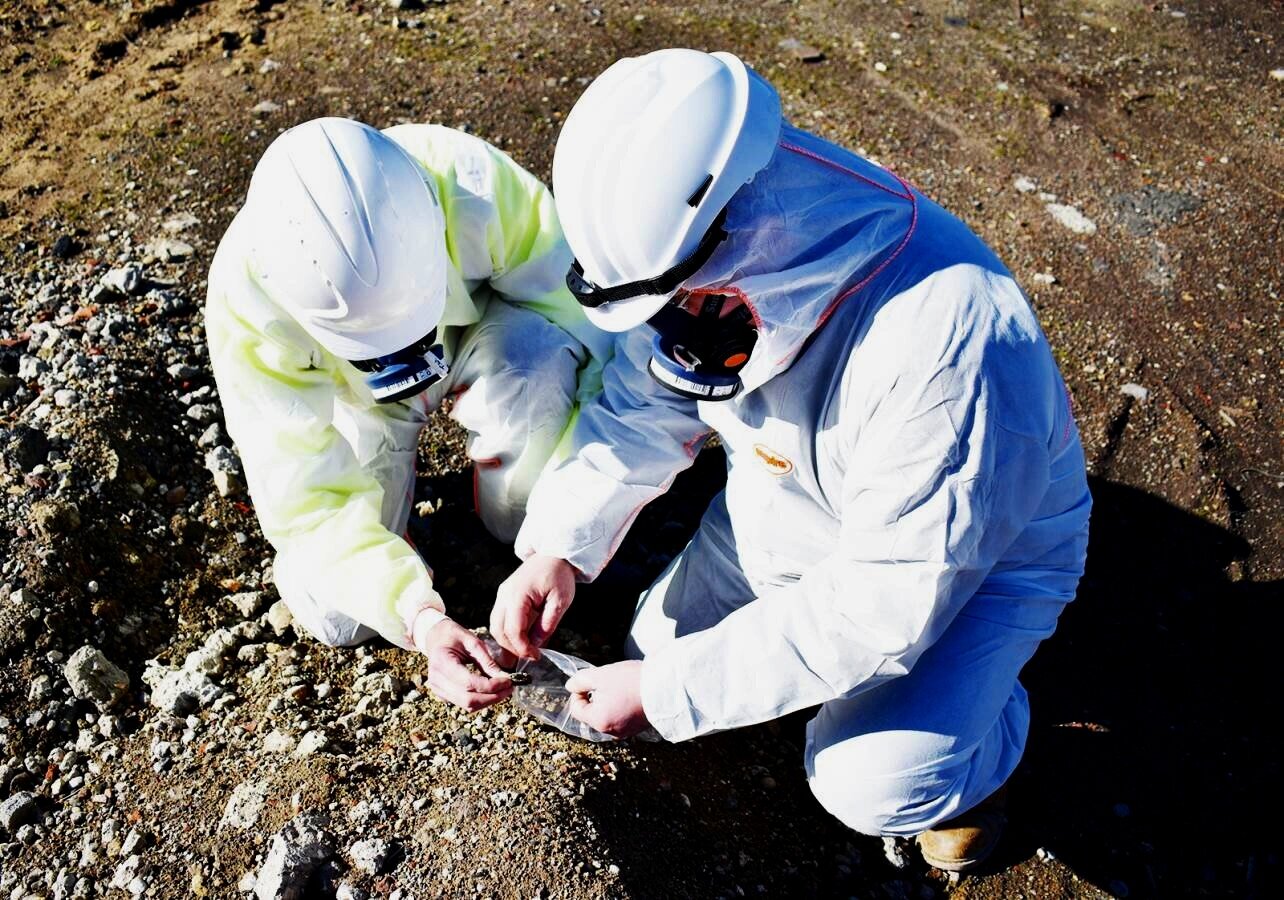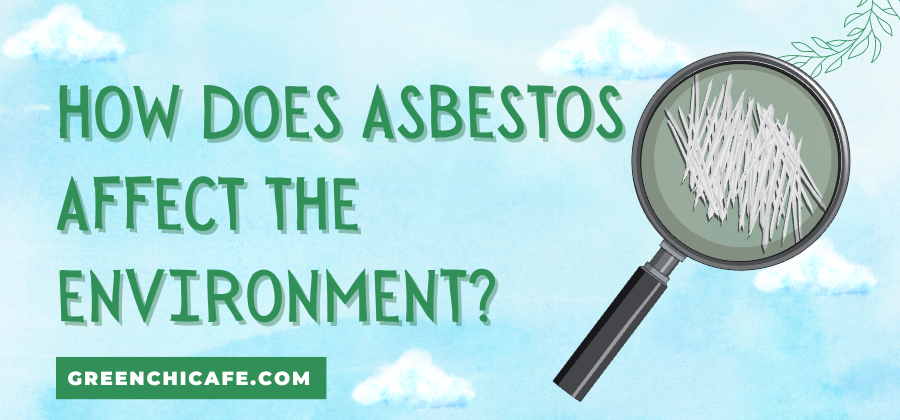Last Updated on June 3, 2024 by Annie Baldwin
Asbestos exposure poses a major threat to the environment and human health.
This mineral fiber is resistant to heat, water, and chemicals, so it does not easily break down once released into the environment.
When asbestos deposits are disturbed, fibers can pollute the air, water, and soil.
How Does Asbestos Affect the Environment?
Asbestos fibers released into the air, water, or soil can cause widespread environmental contamination. Inhaling these fibers increases the risk of lung diseases.
Asbestos also threatens wildlife health.
The fibers resist breakdown, so pollution can persist for years.
Key Points
- Asbestos fibers pollute air, water, and soil when released from disturbed materials
- Inhalation of asbestos fibers causes lung diseases like mesothelioma and lung cancer
- Asbestos pollution threatens both human health and wildlife
Our Opinion
This article clearly shows asbestos is a dangerous pollutant.
Disturbing asbestos materials releases harmful fibers that persist in the environment.
These fibers increase the risks of severe lung diseases through inhalation.
Asbestos pollution is difficult to clean up and has long-lasting impacts.
In my view, better regulations are needed to prevent the release of asbestos into the environment.
We must safely contain existing asbestos and limit new exposure.
How Asbestos Fibers Enter the Environment

Asbestos fibers can enter the environment both naturally and through human activity. The natural breakdown of asbestos deposits found in rock and soil causes fibers to become airborne. Human activities like mining, manufacturing, construction, and improper disposal of asbestos products also release fibers.
When asbestos-containing materials are damaged or disturbed, tiny fibers are released into the air. Since the fibers are so small and light, they can remain suspended in the air for a long time. Eventually, they settle onto surfaces like soil, water, and manmade objects. Routine weathering and deterioration of asbestos products cause ongoing low-level emissions. Higher exposure occurs during activities like home renovations, demolition work, and cleanup after natural disasters.
Once released, asbestos fibers do not break down easily and can persist in the environment. The fibers can also become re-suspended in the air long after the initial release. This puts anyone in the area at risk of inhaling the carcinogenic fibers and developing related diseases like mesothelioma.
Proper handling and disposal of asbestos products can help prevent release into the environment. Protective equipment should be used during activities that disturb asbestos to contain fibers. Asbestos waste must be properly packaged and disposed of in designated landfills to prevent pollution.
In summary, asbestos fibers can enter the environment when natural deposits are damaged or when asbestos products are improperly handled. The resistant fibers persist in the environment and pose serious health risks if inhaled. Preventing release and human exposure is key to reducing the environmental impact of asbestos.
Air Pollution From Asbestos

Asbestos fibers released into the air can cause significant air pollution. When inhaled, the thin fibers become lodged in the lungs and cause scarring that can lead to serious respiratory diseases.
Natural weathering and deterioration of asbestos-containing materials cause the release of fibers into outdoor air. Indoor air can also become polluted when these materials are disturbed inside buildings. Activities like home renovations, demolition work, mining, and manufacturing create asbestos dust and high fiber levels in the air.
Airborne asbestos fibers can travel long distances and spread contamination far from the original source. Studies have detected elevated asbestos levels in the air near mines, factories, landfills, and construction sites. However, fibers released many miles away can also contribute to increased asbestos air pollution.
Once in the air, asbestos fibers can remain suspended for weeks and accumulate in various environments. When inhaled, the sharp fibers become embedded in lung tissues. The body cannot break down or remove the fibers, leading to inflammation and scarring over time. Breathing asbestos-polluted air greatly increases the risk of developing mesothelioma and other respiratory diseases.
Monitoring asbestos levels in outdoor and indoor air is important to identify pollution and protect human health. Controlling emissions, proper waste disposal, and using protective equipment when handling asbestos products can all help reduce asbestos air pollution.
Water Contamination From Asbestos

Asbestos fibers can also contaminate water sources and pose health risks through ingestion and water use.
One way asbestos enters water is through the weathering and erosion of natural asbestos deposits. This causes fibers to be released into streams, lakes, and groundwater aquifers. Runoff from asbestos mining sites, factories, landfills, and contaminated soils also contributes to water pollution.
Drinking water contaminated with asbestos fibers has been linked to an increased risk of gastrointestinal cancers. Asbestos fibers can become lodged in digestive tract tissues and cause inflammation and cellular damage over time. Using contaminated water for bathing and showering also allows fibers to enter the lungs through inhalation.
Water treatment facilities test for asbestos and filter drinking water to remove fibers. However, some fibers may still pass through. Older homes may also have asbestos cement pipes that can shed fibers into water. Replacing these pipes reduces exposure risks.
Preventing water contamination is an important way to control asbestos pollution. Capping waste sites, regulating mining and manufacturing, and testing drinking water can all help identify and reduce hazards. Properly containing and disposing of asbestos materials keeps fibers out of our water.
Soil Pollution From Asbestos

Asbestos can also pollute soil and pose health risks through direct exposure and contamination of crops.
There are several ways asbestos fibers enter soil. Weathering of natural asbestos deposits releases fibers. Runoff from mines, factories, landfills, construction/demolition sites, and contaminated products on properties can all contribute to soil pollution. Fibers may also be deposited from factories without proper emission controls.
Exposure risks include inhaling fibers during gardening, construction, and outdoor activities. Asbestos fibers do not break down and can remain in soil for decades. Crops and plants grown in contaminated soil may absorb the fibers, introducing risk through ingestion.
Preventing soil contamination is crucial. Proper disposal, capping waste sites, and regulating mining and manufacturing can reduce pollution. Soil may need remediation through removal or burying. Using raised garden beds with clean soil reduces exposure from contaminated ground. Testing sites and soil allows early identification and remediation.
Controlling asbestos soil pollution protects public health. Stopping sources, testing, containment, and remediation limits exposure routes. Keeping asbestos waste contained and disposing properly prevents fibers from entering our soil and environment.
Health Effects of Environmental Asbestos Exposure
Asbestos exposure through contaminated air, water, and soil can cause severe health effects. Inhalation of fibers is the primary risk.
Airborne asbestos fibers inhaled into the lungs can lead to lung diseases like asbestosis, lung cancer, and mesothelioma. These diseases have no cure and are often fatal. Symptoms may not appear for 10-50 years after exposure.
Ingesting asbestos fibers in contaminated water or food can increase the risk of gastrointestinal cancers like esophageal, stomach, and colorectal cancers. Asbestos is a known human carcinogen.
Indirect exposure from contaminated soil can also cause respiratory diseases through inhalation of fibers. Asbestos does not break down and can persist in the environment for decades after initial release.
Protecting air, water, and soil from asbestos contamination is vital to reduce health risks. Ongoing research continues to reveal new health impacts from environmental asbestos. Strict regulations, proper handling and disposal, and containment of existing pollution can help safeguard public health.
We all share the responsibility to prevent improper asbestos use and release. Increased awareness and precautions today will lead to a healthier environment tomorrow.
FAQ
Is Asbestos an Environmental Pollutant?
Yes, asbestos is considered an environmental pollutant. When asbestos fibers are released into the air or water, it can cause widespread contamination.
How Does Asbestos Cause Air Pollution?
Asbestos causes air pollution when asbestos-containing materials are disturbed or damaged, releasing fibers into the air. This can happen during demolition, renovation, or improper disposal of asbestos waste. The fibers can remain suspended in the air and be inhaled.
What Are the Effects of Asbestos Pollution?
The effects of asbestos pollution include an increased risk of lung diseases like asbestosis, lung cancer, and mesothelioma. These diseases can develop years after initial exposure. Asbestos fibers can also contaminate water sources, increasing health risks for both humans and wildlife.
What Is Asbestos in Environmental Science?
In environmental science, asbestos refers to a group of naturally occurring fibrous silicate minerals. Asbestos is studied for its status as a hazardous air pollutant and contaminant. Scientists examine the environmental and health impacts of asbestos pollution.
Conclusion
Asbestos is a dangerous environmental pollutant that can have severe effects. When asbestos fibers are released into the environment through the disturbance of asbestos-containing materials, they can pollute the air, water, and soil. Inhalation of asbestos fibers is linked to serious diseases like lung cancer, mesothelioma, and asbestosis. Proper handling and disposal of asbestos is crucial to limit environmental contamination and protect human health. Overall, asbestos has a significant negative impact on the environment and efforts should continue to prevent asbestos pollution.
